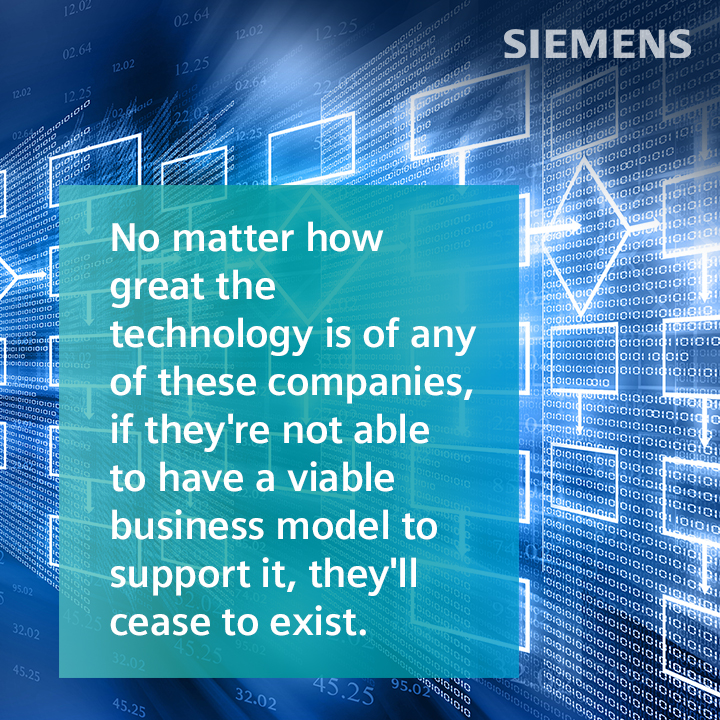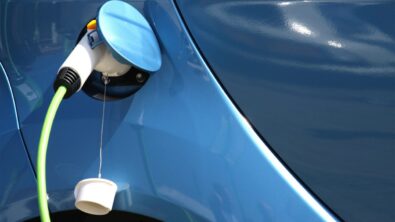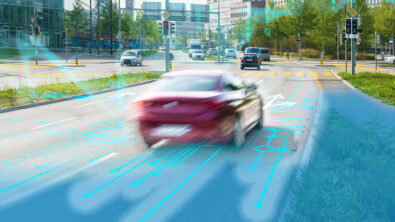The Future Car – AV Development: The transition towards software and electronics – Transcript

In a recent episode of the Future Car podcast, we talked with Nand Kochhar, VP of Automotive and Transportation, and Doug Burcicki, Sr. Director of integrated Electrical Systems at Siemens Digital Industries Software to discuss how E/E architectures are reaching unprecedented complexity as hardware and data network content expand along with higher levels of vehicle autonomy. You can listen to the episode here, or read the full transcript below!

[00:10] Conor Peick: As the automotive industry marches towards the future, legacy manufacturers are attempting to juggle the need for innovation with the demands of their existing business. They need to pay the bill to maintain their existing activities, yet they are also committed to pursuing vehicle electrification and higher levels of autonomy. With existing manufacturing lines in place, this just takes a bit longer. As a result, these companies are struggling to transform at the pace necessary to stay competitive. In the new era of mobility, the most exciting features and capabilities are made possible and made better through software and software updates. And all these events, features, and functionality are enabled through powerful electronics devices. The shift towards software and electronics is also shifting the emphasis in the automotive world towards the electrical and electronic systems, networks, and software development, which is a radical shift for a traditionally mechanically dominated industry. And along with this massive technological change, new business opportunities are becoming available to automotive and mobility companies. As business models change, automakers need to figure out how to generate the most value as new revenue streams open. So as we move into this exciting world, we have Nand Kochhar and Doug Burcicki back to discuss this interesting shift in autonomous vehicle technology and the growing importance of EE systems. So, welcome, guys, glad to have you on.
[01:32] Nand Kochhar: Good morning. Glad to be here.
[01:34] Doug Burcicki: Thank you, Connor. Pleasure to be here.
[01:36] Conor Peick: So, Nand, I think let’s start with you. So, how is the current industry trend for the pursuit of autonomous driving and autonomous cars? How is that affecting the automotive industry both for OEMs and for suppliers?

[01:51] Nand Kochhar: Connor as you know, the autonomous driving, especially automated driver-assist systems, have been in place for the last several years. As the consumers become aware of and enjoying the benefits of that, anywhere from autonomous SAE Level 1 to 5 transportation, the demand for it continues to grow. As a result, cars or vehicles have become computers on wheels, whether it is through the features such as the lane assist, adaptive cruise control, automated parking, and even fully autonomous driving – the demand placed on OEMs – which is the vehicle manufacturers – for a safe reliable and connected and secure mode of transportation has now become the requirement for the new vehicle. So, for automakers, this has caused an increased pressure to keep up with the market trend. So, if you look further, the advances in the technology to the consumer electronics world have immersed itself in automotive to the point that we are now driving a glorified electronic device, so the car has been reshaped. As you mentioned, it’s traditionally been a mechanical or hardware-based business now converting into software and electronics. So, what has that done, which impacts both the OEMs as well as the suppliers: tier ones, tier twos? This has caused increased levels of complexity, because now you need a higher level of system integration. It’s more complex, because of the state of the art of electronics. The cycle time on electronics upgrades in softwares much faster than in the traditional automotive business from a hardware perspective. So the complexity continues to grow. While the need to test and validate these more complex systems, and make sure these new technologies are certified and approved and ready to go to market, that puts a lot of pressure on the OEMs and suppliers. As a result, since it’s a good business model upgrade, it is intensifying competition from the new market entrants. So it’s not just an issue for the traditional OEMs. A lot of new entrants see opportunity in the automobile as well as in the mobility business overall, and that continues to put pressure of solving this issue.
[04:24] Conor Peick: You mentioned the idea of competition in the automotive market. And one thing that’s been interesting is there’s been, seems like a big increase in competition. Could you talk a bit about what we’ve seen going on in the competitive landscape?
[04:39] Nand Kochhar: While we talk about the trends, we have a trend of vehicle electrification, as well as autonomous. While the main competitive driver in electrification is already, in my mind, mature – every major OEM have declared their plans to go fully electric or a significant portion of their production to be electric all over the globe for the next decade. Now, all car makers are also pushing the limit to differentiate from their competition with higher levels of ADAS features which we talked about, and going into fully autonomous driving. So, in the fight for the consumer preference, technology players like Apple, Amazon, Google are moving into the world of transportation as thought leaders, in addition to their traditional businesses of handheld devices, wearable, and assets. So, you see, the competitive landscape is not just the traditional OEM competing with each other, but all these technology players coming in the mobility business. So, an intense battlefield of startups is fighting for the technology breakthroughs as well. It’s not only the big names I touched on, but lots of new startups. Consumer Electronics Show, which recently happened in Las Vegas, CES 2022, was a good reminder and proof that how automotive business is so well-integrated now with the electrical and electronics as most major OEMs presenting, whether it’s virtual or physically in the CES show, playing a big part in there. And then you also see the electronics, the consumer electronics world coming with solutions for the future mobility and the automobile. So, these things have become over the last few years have come together hand in hand, and that’s why electrical electronics play a major role in today’s vehicles and especially in the future vehicles.
[06:44] Conor Peick: One really interesting thing I saw on social media, coming out of CES, there was a car where they managed to make the paint color totally dynamic; you could change the color, essentially on the fly, which I think is such an interesting example of this kind of blend of technology and traditional cars. It looked like a normal car, but then you could just, I imagine, go into a mobile app and say, “Well, I think I want blue today.”
[07:10] Nand Kochhar: Yeah, what a great observation. You picked up a good one. This is some technology, which is unimaginable in today’s world. People in the traditional automotive business know how hard it is to get the paint systems and paint colors and how expensive it is in a physical sense what we’ve been doing for last 100 years. It’s just total revolution if we can accomplish that through technology.
[07:36] Conor Peick: So, then Nand and Doug, I think this is a good question for both of you. What are the biggest challenges facing these companies as they’re moving forward into this new world?
[07:47] Nand Kochhar: So, the traditional ways of working potentially caused a lot more issues. You used a good example of paint color. Also, a lot of – in a traditional way – people are still working in silos that disconnects between sources of information coming from, let’s say, product development to manufacturing; and within product development, different domains. Working with physical prototypes, testing these prototypes and redesigning to further optimize, that’s what I will call is a traditional approach, and that poses big challenges because we can’t afford to do the same old processes we’ve done for many years in the light of what is expected from a customer to follow these trends and deliver the product to them in law more quickly. Obviously, we talked about increased competitive landscape, that’s not going to get any better, more and more technology players and startups are going to continue to come to be part of the mobility solutions.

[08:47] Doug Burcicki: I kind of bucket them into three main challenges for any player in the auto industry. There’s clearly technology challenges staying on top of and abreast of what’s going on, but more importantly for many of the companies, staying ahead of technical evolution, because even in the last 10 years, you’ve seen generational shifts and technologies. And you can look at LiDAR, for example, which is an integral component of any autonomous vehicle – or most autonomous vehicles, I should say. They existed in form factors that didn’t enable a longevity or high degree of quality and maintainability over a normal automotive lifecycle 10 years ago, and now we’re moving into solid-state componentry at a cost-effective price that helps enable and facilitate realistic architectures and price points. So, there’s a continuous evolution there. The challenges that Nand stated in regards to working in silos, I attribute to organizational. You have a big rift in the industry where you have traditional legacy OEMs and suppliers as well. And then you have this influx of new competitors who approach things from an entirely different perspective and background. And many of them, as Nand stated, are coming from consumer electronics areas where they have different development methodologies, they have different organizational structures that were put in place for them to be more nimble and agile. And they, at least on the surface, do seem to be able to do things a little bit quicker than some of the legacy competition. But at the same time, they’re not steeped in decades of historical requirements, and they don’t understand the automotive landscape as well as some of the stalwarts who’d been around for over a century.
[10:36] Doug Burcicki: So, there’s pros and cons to both approaches, but there are challenges nonetheless. But I think the biggest challenge for all of them is business viability. For these new entrants, most of them are looking for cash infusion from outside entities, thus they have milestones and timing that they need to hit. They need to do it in a fashion that ensures that they’re going to move on to the next funding milestone, which means functional product, functional prototypes – prototype that’s reached a certain level of validation in order to garner that additional investment. Whereas the legacy OEMs are trying to keep their normal operations running, their internal combustion portfolio profitable. So, it’s returning to further future investment as well as returns to the existing shareholders. Those are challenges that the startups don’t have to deal with. So, many different challenges, but I would put them in those three main categories: the technical, the organizational, and the business viability. No matter how great the technology is of any of these companies, if they’re not able to have a viable business model to support it, they’ll cease to exist. And you’ve seen that happen over the last 10 years, there’s been tens of billions of dollars invested in autonomous vehicles and no one has one sitting in their driveway yet for personal use like has been promised multiple times. So, it’s a challenge. And it’s not just a technical challenge; it’s being able to be profitable building those types of vehicles. It’s a much different landscape, obviously than 10 years ago for many different reasons.
[12:09] Conor Peick: Certainly. And part of that, Nand, is also this accelerating pace of development. It seems like speed is becoming more and more essential.
[12:17] Nand Kochhar: Definitely, that’s very true. As you know, the traditional vehicle platform has a product development cycle time of anywhere from four to five years, depending on what size of the program: whether it’s a new platform or a new vehicle, what level of change an OEM is bringing. Now we already see those product development times have been shrinking. So you can say, today, it’s anywhere from 18 months to 24 months. Having said that, it’s continuously is going down. Especially if you look at in the light of what we both, Doug and I, talked about, electrical electronics and software are becoming part of the automobile as a major dominant. So, we know in that industry, the cycle times of 24 months are unheard of. So, when an electronic device is being updated, it’s a software update or even a hardware update; it’s done in a modular way. Six months is the product development cycle time, so you can have a next-generation phone within six months, from the electronics industry standpoint, or 12 months. So, now we can see that, why are these two things coming together, because people are seeing very clearly, separating a clear differentiation of “Here’s the hardware platform and here’s the electronics and software platform on top of it.” So they can create new features, new functions, over-the-air updates through software, which by the way, Tesla has already been doing it for a number of years, that just give us a different definition and different meaning to product development cycle time. It’s ultimately going to become close to what the electronics industry has been doing, and these two things are going to come together.
[14:12] Conor Peick: Produce a hardware platform and then continue to update it over its life to bring out new features and, essentially, extend maybe the value for the customer.
[14:22] Nand Kochhar: Exactly. Give new experiences to the customers. Obviously, the overall experience is just great. You don’t have to keep taking the vehicles back to the dealership for upgrades. And you touched on the business model. It’s also changing the business models. People can pay for what they need with over-the-updates and not have to pay for the things they probably are not going to use or doesn’t work for their taste. So, there are lots of different things going on from a product development cycle time perspective.
[14:55] Doug Burcicki: Another interesting aspect of that, Connor, is the product lifecycle is very sequential, historically. Sure, there’s always been software in the vehicles, but the software and the hardware were not developed necessarily holistically together. The guys writing the code needed to understand the hardware that they were going to be ported on to and the feature performance requirements of the respective subsystem that they’re supporting. But nowadays, you’re looking at OEMs are instead of going off and pulling off-the-shelf components into their architectures, they’re developing bespoke requirements for their respective ECUs. And then they’re porting software based on features and functions onto those respective ECUs. Now, the same ECUs may be in use on different platforms but different functions and features may reside on those. And those features and functions may get moved around after vehicle is purchased because of this onset of the capability to have these over-the-air updates for users to personalize their vehicle, much like the paint example that you gave before. But from a software functionality perspective, they may decide to turn on a high-performance package that adds a couple of hundred horsepower and some handling aspects to the chassis for the weekend because they’re taking their car out to a test track or a race track, but then turn it off for their normal commute in urban traffic on their way to work the following week. And they can turn those features on and off and pay a service for those. Well, that is hard to do from an engineering perspective; to design what you don’t know is going to be required in the future. And what I mean is, you can launch a vehicle, and then two years after that vehicle is on the road, you may have new features that can be delivered to that vehicle over software. It’s a challenge, but one thing that’s coming into play is in the past because it was sequential, you’d go through design and development iterations and then validate and then release your product to the public. Well, nowadays, it’s turned into a continuous integration and continuous validation because you continue to write code and implement code on systems that are already out on the road and in people’s garages, and you want to provide that feature via updates but it needs to be validated before you can do so. And those are things that the cellphone industry has been dealing with for years. But it’s a different failure mode when your cell phone locks up and you need to restart your phone to get it up and running again because an app locked up on you. You can’t really afford to have that happen when you’re going down a highway at 80 miles an hour, and a Level 3 autonomous feature locks up on. A little failure mode would be catastrophic. So, it’s a different mindset, and clearly, you can see a much different level of challenge for the OEMs to deal with as well.
[17:50] Conor Peick: What’s interesting to me is these features we’ve been talking about for the last minute or so, they rely on all the systems of a car: the braking, steering, even the infotainment, relaying information back to the passenger. So, it seems like everything’s coming together, everything needs to be more integrated within the vehicle. So, Doug, I was wondering if you could comment on the complexity that’s being driven into the EE systems because of technological changes, but also because of this kind of integration of systems.
[18:24] Doug Burcicki: There are two main drivers to the complexity. One is just the feature content, the never-ending addition of features and functionality. Though EMS have always struggled with trying to add features over the life of the vehicle. And as much as they’ve done to try to simplify and minimize that, it does nothing but grow, grow, and grow. Because we, as consumers, continuously want additional functionality and features. Things that we look at now as a standard on every car, like a backup camera system, those were innovative high-end features not all that long ago. An unrelated topic, but the chip shortage this year, one of the features that impacted from a major OEM was heated seats. You don’t think about it – heated seats, for people like me who live in the northern states, are just a de facto feature on a vehicle, but they’re not; they’re an option. It just shows, over time features become standard and commonplace, but there’s always that next-gen feature that we’re trying to add. Well, if you take that and put it on top of that variability or design variants, now you’re really talking about a lot of complications because these OEMs make cars for many regions and countries. Some of them are left-hand drive, some are right-hand drive. There are regional-specific safety requirements that may not be required in all parts of the world, like Euro NCAP requirements, those will eventually drive a certain level of standardization on features and safety functionality, but they’re not required everywhere, so OEMs aren’t necessarily going to include all that content in every region they sell vehicles on.
[20:08] Doug Burcicki: So, that challenge will never go away. What makes OEMs and suppliers more competitive is being able to manage and, in best-case situations, leverage that variant phenomenon and understand how it ties into their entire supply chain, and from a design as well as a manufacturing perspective be able to manage as well as mitigate risk associated with those. And one way to do that is bringing features in via software. But even with software turning features on and off, you still need mechanical components there to perform features and functions, you need power and ground of wiring in order to enable them to do that. One of the offshoots of all of these features and functionality is the complexity of a wire harness to connect everything, certain aspects of that, I think, will be improved through ethernet and other high-speed data links. But because you’re always adding features and functionality, I always see the complexity of the wire harnesses not going anywhere because vehicles are designed and built for many, many years, but their variants and options that are added on to them will continue almost on a monthly basis throughout the life of those programs.
[21:23] Conor Peick: What about with autonomous vehicles in particular? Do you think that sort of technology, does that represent another sort of step in the complexity level?
[21:34] Doug Burcicki: Absolutely it does, because, again, now you have to start looking at subsystem integration that necessarily wasn’t required in the past. You also have to understand, because you’re doing this all in the context of an EV architecture at the same time, as Nand stated earlier, almost every OEM is committed to going EV at some point in the near future. So, now you’re looking at multi-voltage architectures, there are EMI and EMC characteristics. And like I said, you’re talking about critical safety systems on a growing number of subsystems because of the ADAS and autonomous vehicle functionality. So, the interactions of the subsystems need to be better understood than ever. And then, again, we mentioned software, but that software configuration management, understanding what upgrades or updates have taken place since an owner has bought a vehicle. All of that’s very necessary and it’s required to be traceable because you could have two vehicles, side by side, on the road that on the surface look like the exact same vehicle, but they’re very different because they’ve gone through different software upgrades, because their owners have made different purchase decisions after they bought the vehicle in regards to additional functionality. But all that needs to be understood by the OEM, as well as the service dealerships or service centers that are taking care of these vehicles over the life of their existence. ADAS and autonomous definitely does add various levels of complexity, and there are different approaches OEMs are taking; some are taking what they would refer to as a scalable approach and building on top of core capability to achieve the higher levels of autonomous functionality; and other OEMs are treating on more from various levels of architecture like a bass, mid, high for lack of a better term, where you may have an architecture that supports Level 1, 2, 3. And then once you get to 3+ and beyond, you’re moving into a higher level of compute power and a different physical architecture to support the required cameras and sensors associated with it. So there’s not a one-size-fits-all, but yes, the complexity of AV and ADAS is definitely having a direct impact on architectures as we see them.
[23:54] Conor Peick: The next big question, I think, for both of you guys: why are OEMs or any company for that matter, why are they going through all this struggle and dealing with this complexity and the cost, too, of developing these advanced technologies? What do they see in the future that’s driving them to take on this challenge?
[24:13] Nand Kochhar: That’s a very good question. And you can see from a consumer trends perspective, what are the differentiators when a consumer is making a decision? Traditionally, for automobile, it has been, “Hey, how’s the design? How’s the horsepower? Color?” As an example. But if you go to the next generation of consumers, those are not necessarily the only differentiators today, they’re looking for what level of connectivity is there? What kind of software-centric features? That is what is causing all that shift from traditional OEMs, from the mechanical the development, sequential way into more need of transfer into chips, electronics, and software specialist. As an example, consumer wants to be connected all the time. So, they have a handheld device, whatever, a phone, and they’re watching the movie, kids are watching a movie at home. One day of going for their travel and moving into a car, they want all that connectivity seamlessly going into the car, so they sit there and continue to watch the same movie. And if they’re on the phone, they expect the same thing. So, now you see, they don’t care how well the car is handling, or how well it drives, kind of thing that might be important to someone else, but that generation is looking for how easy it is from a connectivity perspective, is one good example, you could see the differentiation coming from the consumer trends perspective.
[25:45] Doug Burcicki: Nand is spot on with talking about the difference in the consumer behavior. I’ve mentioned in the past, I have four kids, all driving age, none of them selected their vehicles because of color, make, most of them weren’t concerned about body style. I had one boy who wanted a pickup truck. But other than him, all they cared about was if it had Apple CarPlay, and if they could connect their phone to it once they got inside. And if it had that, they were good. So, it’s just so much different purchasing decision and it’s interesting too. I’ll go a little further down the road in regards to autonomous vehicles. I think we’re a long way away from any of us having personal autonomous vehicles in our driveways, at least people who have normal jobs, so to speak. But there are definitely use cases, there’s a lot of utilization in off-road applications around heavy equipment and agriculture. But these are geofence repeatable use cases, and there’s a business model that’s supported by it, it’s worth investing in implementing that technology because they are truly eliminating human operators, or they’re creating a safer work environment depending on what’s going on in these certain applications.
[27:04] Doug Burcicki: But there’s a business model, as I said before, there’s a sustainable, viable business model that people can profit from, so it makes sense. Another example that is in close geofenced areas like universities or hospital campuses, or airports, things like that, where you have repeatable routes that are being run over and over, you’re seeing robotaxis hauling 12-18 people around at a time on a set route to a set location. And in those environments, they can put additional sensors to connect the vehicle to the infrastructure and have a safer, even more reliable route guidance systems, so to speak. So, there are cases where that’s all gonna come to fruition if it’s not already. But again, I don’t see it happening at scale anytime soon for the average consumer. I think some of the divisions that were had several years ago won’t be realized anytime soon. And you’re seeing in the market, a lot of the so-called leaders in robotaxis and autonomous vehicles are now captive technology providers to larger OEMs or system integrators. It’s part of the market evolution. But I think that at the end of the day, the consumer who’s buying vehicles will dictate what those vehicles are going to do and how they’re going to do it. And I don’t think there’s a market yet for personally owned AVs at this point.
[28:34] Conor Peick: As we talk about moving towards this idea of the AV, hopefully, most of our listeners will be familiar with the idea of levels of autonomy; I know we’ve talked about it before on this podcast. Doug, I’m curious, do you see current Electrical and Electronic Systems standards acting as sort of a bottleneck in the development of higher levels of autonomy? Or is there some other thing at play?
[28:58] Doug Burcicki: I don’t think that any form of a standard is acting as a bottleneck. I think, at least in the States, or probably more profoundly in the States, what’s lacking is government or regulatory guidelines. Other than the SAE levels of autonomy, there’s very little guidance out there until recently on what a Level 2, 3, 4, or 5 vehicle is and how to safely implement it. The automotive industry has never been the best at standardizing globally, it does better in certain regions than others. But I don’t view any standards or standards bodies as having slowed down autonomous development. I think we’d be better off with a more consistent framework to operate within instead of companies trying to figure it out on their own, taking vastly different approaches to it. So, yeah, I don’t think it has caused any slowdown. I don’t think it’s helped us accelerate the pace of development, but it hasn’t directly slowed us down.
[30:05] Nand Kochhar: I agree with Doug’s statement. You can divide it into three major categories: technology, policy, and then consumer acceptance. So, that’s what will drive the autonomous vehicle levels, as you mentioned, SAE Level 3 to SAE Level 4 to ultimately SAE Level 5. Technology and the technology standards is, in my mind, not the bottleneck. Because as the technology matures, it’s all the other two aspects need to come in together, including the consumer acceptance part of it, which is very important. Not every generation of consumer is going to be comfortable in going in their autonomous car as we’ve seen results from several pilots [30:53 inaudible] over the last few years. So, I think those are the big factors.
[30:59] Conor Peick: I think that’s a great point that you make about consumers; being comfortable in getting in a vehicle that they’re not controlling. For a lot of people, even those who are excited about it, I think it’s a very alien experience – being in a vehicle that is navigating itself through an environment. I imagine it would be strange for me.
[31:18] Doug Burcicki: It is strange. I think, just like many other things, it’s strange at first, then you go accustomed to it. You get into that whole, as Nand put it, customer acceptance or consumer acceptance, a lot of that boils down to quality, trust, and believing in the OEMs vehicle that you’re sitting in. So, a lot of startups that purport to be further along, do they have that reputation with the consumers that are going to instill them with confidence to sit in one of those vehicles and has yet to be seen or know down the road, I guess?
[31:57] Conor Peick: That actually brings me onto my next question really nicely, which is the idea of the performance of these systems that are more and more software and electronics based, it opens up new modes of failure for a vehicle where, previously, it was more mechanical failure, which I’m sure that will still exist to some extent, but our vehicles and the occupants can become, I don’t want to say more vulnerable to failure, but it changes the nature of the equation there it, doesn’t it?
[32:26] Nand Kochhar: Yeah, definitely. Autonomous vehicles driving responsibility, moving more towards the vehicle that is critical to the vehicle system performances are continuously monitored and analyze. As we just touched on safety, it’s going to be a critical factor in making the consumer acceptance of these feature functions and, ultimately, the level of autonomy. But as Doug mentioned, we can see with all the SAE Level 4, where you have some levels of geofencing, whether that could be in the automotive industry or adjacent industries, like heavy equipment, farming, those scenarios are within the transportation. It does not necessarily have to be about individual car, but it could be the trucking industry might take a leapfrog and will adapt to SAE Level 4 maybe sooner than a consumer car, personal car driving experience. So, those are a lot of things which you will see a lot of maturity of the technology with the policymakers and the consumer acceptance coming along.
[33:39] Conor Peick: And the reliability of these systems. I mean, we just talked about acceptance and Doug mentioned trust – so, demonstrating the reliability of the technology, I think, is going to be really critical to improving that trust and acceptance in the market.
[33:54] Doug Burcicki: That is correct. That’s what you also see from a traditional OEMs who have [33:59 inaudible] track record or over 100 years of history, where consumers are more focused on the holistic and the safety experience, and they are taking extra steps to make sure because it’s their brand name established with it. But when they come to the levels of autonomy, they’re very, very careful about declaring what level of autonomy and what use case experiences are being touted in the public before a consumer makes the decision.
[34:31] Conor Peick: So, to wrap up our conversation for today, what do you guys see as the path forward for these companies? We’ve discussed their need to innovate but also support their traditional businesses; there’s growing complexity, growing integration, and all these challenges. So, how can they move forward? What can they do to prepare themselves for this future of mobility and transportation?
[34:57] Nand Kochhar: I think we both touched on a level of complexity which is increasing in the role of electrical electronics. So, first thing is, I would say, partner with an expert in digital transformation. So we lump all these things together in a digital transformation scenario. No OEMs or any company out there says that they can do it on their own, so there’s a very real need of building partnerships, of working together, or addressing this complexity. So, the very first point is partner with an expert in digital transformation. That touched on very good three points, and one of them was about the organizational piece of it. So you have to cultivate collaboration and connectivity throughout the organizations. So, in other words, you can’t work in silos anymore because for a holistic experience and for a safe experience, all of these things are so connected, mechanical to electrical electronics with in a vehicle, your infotainment system to safety systems, etc, that you have to cultivate that collaboration throughout the organization. And from a technical standpoint, what we call, you need to build a comprehensive digital twin of a virtual experience and a physical experience, these two things coming together. Because with this level of complexity, that is very clear as well, but you have to be the expert in the virtual development, especially in the software arena, as you can’t validate in a physical testing environment all this huge complexity. So, the digital twin technologies allow you to speed that up. So, that would be the third factor.
[36:38] Doug Burcicki: Yeah, Nand’s first point is where I was going to go. The word partnership – there is not a single company out there, whether it’s a technology supplier or an OEM, that can do all of this on their own, not a single one. And if they do do it all on their own, they may get there, but they won’t be as fast or they won’t have as innovative of a feature set to offer; there will be some part of their game that is weaker than some of the competition. I look at the auto industry and we used to use the term “supply chain” which infers a sequential series of events, you’d have a traditional Level 4, a three, a two, a one that’s supplied directly to the OEM. Nowadays, you’re seeing two partners, you’re seeing what are referred to as Level 0.5 Integrators that are doing vehicle integration work for an OEM because they’re subject matter experts on certain technologies. You have fabulous OEMs, OEMs that don’t even produce their own vehicle; they’re outsourcing that. So, there are various business models out there, all of which have an opportunity to be successful, all have an opportunity to fail. But that right balance is based on your partnerships that supply ecosystem that you develop and move forward with. I don’t see an OEM out there that can do it all on their own. The most successful and competitive companies in the near future will be through an extensive network of partners that they’re collaborating with, but they’re all working on a digital environment or a common data set – the digital thread as Nand had mentioned. That’s what facilitates and enables that collaboration across multiple entities as having one common data set to make the same decisions off of.
[38:21] Conor Peick: Nand and Doug, I just would like to thank you guys again for taking the time to be on the podcast again. I really appreciate your insight and your time.
[38:29] Doug Burcicki: Thank you, Connor.
[38:29] Nand Kochhar: Thank you, Connor.
[38:31] Conor Peick: And we will catch you next time on The Future Car podcast. We’ll be talking more and more about autonomous vehicles, electric vehicles, and everything else moving forward in the future of the automotive industry. Thanks very much.


